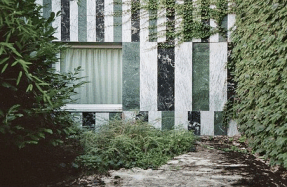Question 3: How Does Korea Support the Circulation of Materials?
To overcome environmental crisis, it is necessary to pursue economic development while also prioritising the preservation of the environment and saving our limited resources and energy. Therefore, a ‘circulating society’ emerged. That is to say, the entire process – from the collection of resources, construction using collected resources, the operation and maintenance of the constructed structure, to the demolition of the structure that has fulfilled is purpose and the recycling of waste resources from demolition – correlate in a method of circulating. In this life cycle, the environmental load at the stages of demolition of a building is estimated to be about 5%. It is lower than the environmental load at the stages of construction and operation, but in a circulating society, it is important to cope within every stage of the entire life cycle.
In terms of scale and speed, urbanisation in South Korea is growing at the one of the highest rates in the world. Many structures were built in . The term ‘demolition’ was often understood as ‘removal’. To make a finer distinction, ‘removal’ is the concept of randomly destroying a structure with the materials of interior decoration still intact, without considering the amount of waste debris generated. The dictionary definition of ‘demolition’ is to sequentially disassemble mechanical parts in the reverse order of assembly. In other words, to demolish is to first eliminate the numerous materials involved in interior decoration that may be generated as debris before destroying the entire structure, in order to raise the recycling rate of waste concrete. Today, the term ‘separating dismantlement’ is used to encompass these concepts. The seventh clause of Article 2 in the Building Management Act specifies that ‘demolition’ is ‘to destroy or to eliminate a building by cutting into the whole or part of it, in order to build, perform major repairs, remodelling, or total dispensing with the building’.
You’re reading a preview, subscribe to read more.
Start your free 30 days





